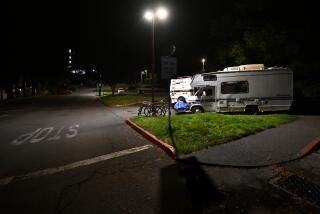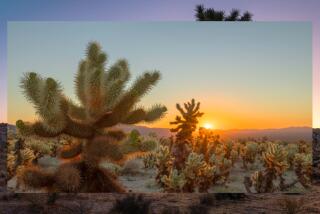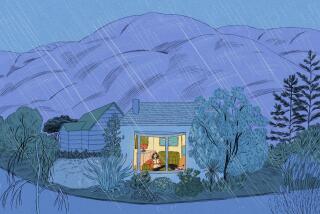Taking her daughters to remote Australia to sleep on the ground
NORTHERN TERRITORY, Australia — It was a terrible thing to admit to myself, but my teenage daughters are a bit spoiled. My own youth involved riding public transportation, taking bug-infested hikes, sailing competitively in thunderstorms and sleeping on the ground. My children, I realized, would be adrift if asked to do any of these things.
Summer was approaching, and I knew I had to do something.
“We are,” I informed them, “going to remotest Australia, and there we shall sleep on the ground and in tents. This will be very good for you. And don’t bother to bring your phones. They won’t work.”
They gasped. They objected. They cited the number of venomous snakes and spiders and noted the crocodile population in Australia. All of it fell on deaf ears, just as my whining had when I was a girl.
The Northern Territory, the least populated of Australia’s eight main states with only 235,000 people in a place the size of Peru, sounded like the ideal location for my teen-toughening task. It has an abundance of untouched bush, rain forest, rivers, wetlands, mountains, escarpments, beaches, gorges, deserts and swimming holes.
Most of the Australia travel specialists I contacted wanted to send us to the established tourist hotels in the well-known parklands, but fine linens, room service and Internet were not what I had in mind. Finally, I found L.A.-based Springboard Vacations, and when I described my goal, the Australian owner told me, “No worries. We’ll send you into the backabeyond. And I promise your kids will speak to you again.”
We had two weeks, and in that time we would start in Darwin and drive down to the Katherine River, where we would take a guided kayak trip and sleep on the ground. I caved slightly and agreed to go to a new semi-luxe bush camp in the Mary River wetlands, but at least we would be in a safari-style tent cabin with no room service. Then we would head to the top of the state to the Cobourg Peninsula, where there was a small camp with tents, no room service, no Internet.
We flew into Darwin (we had a stop after the 14-hour flight to break up the trip), then drove 200 miles southeast to reach the three-pub town of Katherine, spending the first night in a simple cabin in a campground at Katherine Gorge.
Early the next morning, Mick Jerram, owner of Gecko Canoeing & Trekking, picked us up for our four-day trip on the Katherine River, which flows through Arnhem Land, Kakadu National Park and the 13 flaming red-walled gorges that make up the Katherine Gorge of Nitmiluk Park, and past the namesake town of Katherine.
Flowing year-round, during the “wet,” as locals call the rainy season, the river can rise more than 60 feet, flooding the surrounding banks. But in the “dry,” or March through October, the river is wide and calm with a few small rapids shaded by gum and paperbark trees that grow on sandy banks between rocky outcroppings. The water was perfectly clear and cool.
We were instructed to pack one change of clothes into a dry bag, and we were handed a swag, the traditional Aussie oiled-canvas sleep-under-the-stars bedroll that would be our nighttime arrangement for the next three nights. Everything had to be packed into our kayaks. This was an excellent exercise for teen girls.
Indigo, my 14-year-old, and I were each in our own kayaks. Sofia, 13 and small, was doubled up with Mick in his canoe. A lively British couple accompanied us in another canoe.
The river was calm and the bush beautiful and alive with bird life and wallabies. On our first lunch stop riverside, Mick challenged the girls to a bird-species-spotting contest, having taught them a bit about local fauna as we paddled that morning. The outcome was the identification, with much help from Mick, of 28 species in 10 minutes: kookaburras, cockatoos, bee-eaters, ospreys, kites, wrens, herons, fantails and pelicans among them.
Each evening we would pull below a small rapid (crocodiles don’t like rapids), swim, make camp and help Mick as he turned out gourmet meals: roast beef with chutney and lemongrass barramundi cooked in a classic outback Bedourie, a type of Dutch oven, over hot coals. The girls were put to work gathering firewood, setting up camp and getting water.
Afterward, they lounged in the river, tattooed themselves with mud and made instruments from sticks. Then, as cold descended, we climbed into our swags and fell asleep to one of the most cosmically brilliant night skies on the planet, waking to no sound other than that of birds and river.
The routine was so peaceful that after four days and an easy 35 miles of paddling, I felt like one of those Buddhist monks who can slow their heartbeat to nearly nothing. That’s the joy of trips like this: All else but the moment disappears.
After three nights and seeing only four other humans, we returned to Katherine and took a small plane 40 minutes northwest to the Mary River flood plains and Wildman Wilderness Lodge. The Mary River National Park, about halfway between Darwin, the capital of the NT, and Kakadu National Park, is less touristy than Kakadu, and the lodge is about as fancy as it gets in the Outback, with tent bungalows that can accommodate 60 people, queen beds, bathtubs, a swimming pool and fine wines. Not qualifying as roughing it, the bungalows fall into the “glamping” category. There was even Internet.
The camp is surrounded by flood plains, so it teems with wildlife, including “Big Arse,” a 19-foot-long saltwater crocodile that lives in the local billabong, or small lake. Saltwater crocodiles are man-eaters. Freshwater crocs are more benign; humans aren’t their snack of choice. The hitch with “salties” is that they can also live in freshwater, which makes swimming in the Northern Territory an exercise in extreme caution or an event to be avoided.
We spent the days at Wildman taking high-speed quad bike rides through the surrounding grassland and out to the wetlands, boating down the Mary River, lounging by that pool, taking Jeep rides to spot Big Arse, or doing bush walks with a local guide.
The best way to cover the vast, empty distances in the Outback is by light aircraft taxi, so we took one to the northernmost point of the NT. The Cobourg Peninsula is one of Australia’s most remote locations, with a population of about 50 living in an area covering 1,700 square miles. This area has such rich and protected biodiversity that only 15 cars are allowed in Garig Gunak Barlu National Park each day.
Venture North camp, started by brothers Hugh and Aaron Gange who grew up in the bush farther south, is eco-luxe, meaning you get a tent, a comfortable mattress on a metal frame and a bathroom block with outdoor showers and loos. The camp has eight tents and can sleep up to 16. The site cannot be surpassed; nor can the food.
The camp, in Garig Gunak, sits atop red cliffs overlooking a stupendously beautiful beach. The only bummer is that you can walk, but not swim, at those beaches, the crocodile population being what it is. But as I sat drinking fine Australian wines, eating gourmet food and watching a glorious sunset as 16-foot crocs watched me from the beach below, the thrill of the place was worth the no-swim sacrifice.
Hugh Gange was our guide, and on our first afternoon he told us we were heading to the beach to go mud crab hunting. Wielding a stick with metal prongs on the end, Hugh showed the girls how to identify tide line rocks under which the crabs hide.
Within 15 minutes we had caught four huge crabs. Hugh then whipped out a hammer and a mallet, exhibiting how to shuck the oysters we got straight off the rocks. This was easy pickings, and despite shouts of, “Oooh, gross,” and “No way,” the girls were soon banging away and securing our hors d’oeuvres.
Hugh, a modern Aussie bloke, then took to the camp’s open-air gourmet kitchen and whipped up crab stir-fried in a wok with chili and steamed crab with garlic butter for the girls. He then did the same with the giant, fresh oysters, leaving some raw and cooking others in the British Kirkpatrick style with bacon and cheese.
We spent our days at Venture North gathering food on the shore, fishing in one of the most abundant marine areas on Earth and visiting the ruins of a Victorian English settlement. Hugh explained how 80 miserable settlers built houses, hospitals and cottage industries, then died, one by one, of scurvy and malaria.
The neighboring Aborigines had tried to teach them to chew the leaves of the quinine tree (cure for malaria) and line their houses with melaleuca bark (natural bug repellent), to lick the citrus-tasting bellies of green ants (vitamin C) and eat the Kakadu plum (a fruit with a huge concentration of vitamin C), but the settlers thought this behavior primitive.
At dark, I would retire to my tent and listen to the girls in theirs next door, giggling and talking about the fish that had practically jumped in the boat, how they felt they ought to always gather their own food, and how, after all, they didn’t really miss their cellphones.
Mission accomplished.
More to Read
Sign up for The Wild
We’ll help you find the best places to hike, bike and run, as well as the perfect silent spots for meditation and yoga.
You may occasionally receive promotional content from the Los Angeles Times.






